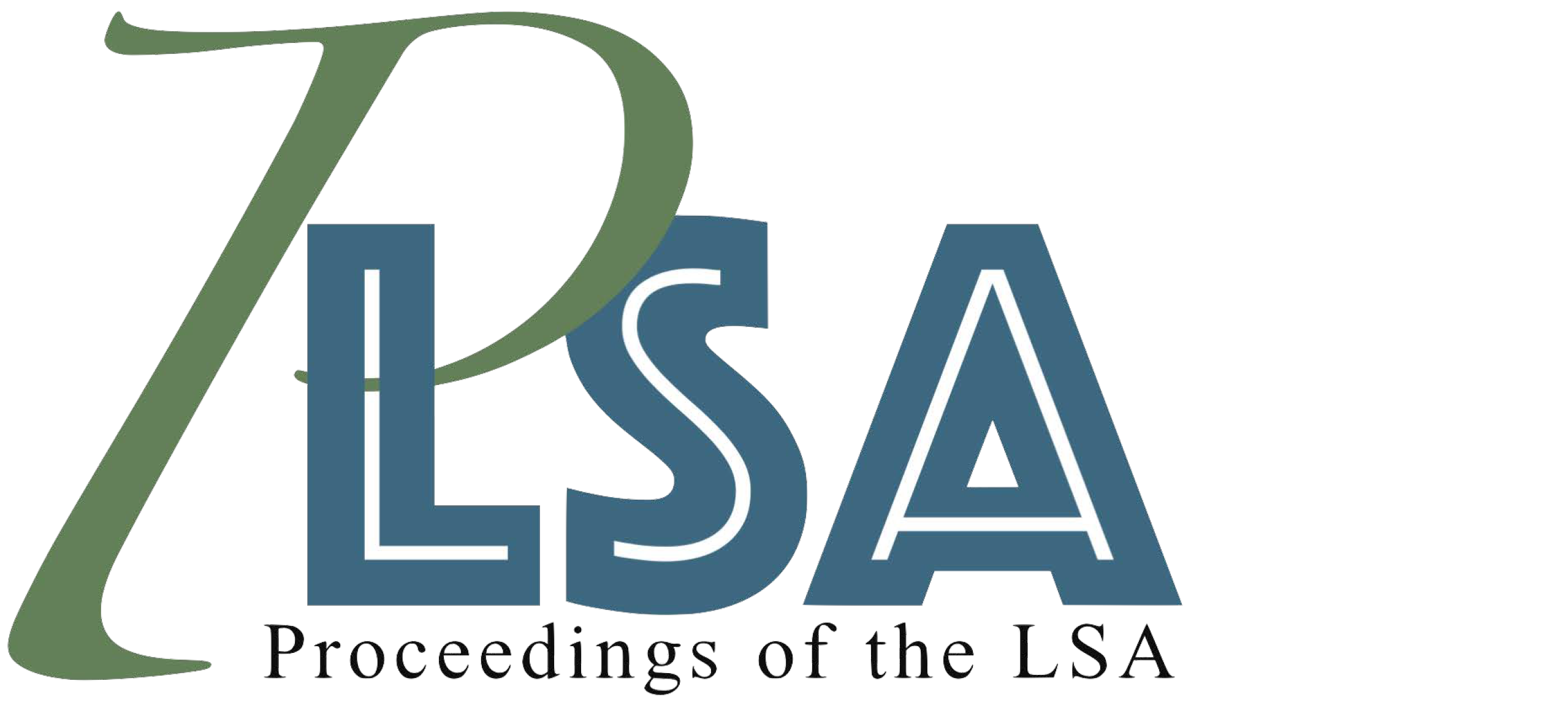Phonological learning is asymmetrical between prefixes and suffixes
DOI:
https://doi.org/10.3765/plsa.v9i1.5743Keywords:
phonology, morphophonology, learning bias, artificial language learning, affixes, prefix, suffix, asymmetryAbstract
Phonological theories typically treat prefixes and suffixes as if phonological processes apply uniformly to both. However, previous studies have found clear asymmetries between the behavior of both affixes. We argue that this is due to phonological processes being easier to learn in suffix position rather than prefix position. To test this, an artificial language learning task was used to evaluate whether phonological learning is symmetrical between affixes. Results pattern in the direction of the hypothesis, namely, that phonological learning is asymmetrically facilitated in suffix position over prefix position, providing support to general cognitive mechanisms being responsible for strong cross-linguistic tendencies.
Downloads
Published
Issue
Section
License
Copyright (c) 2024 Darby Grachek, Elsi Kaiser

This work is licensed under a Creative Commons Attribution 4.0 International License.
Published by the LSA with permission of the author(s) under a CC BY 4.0 license.
